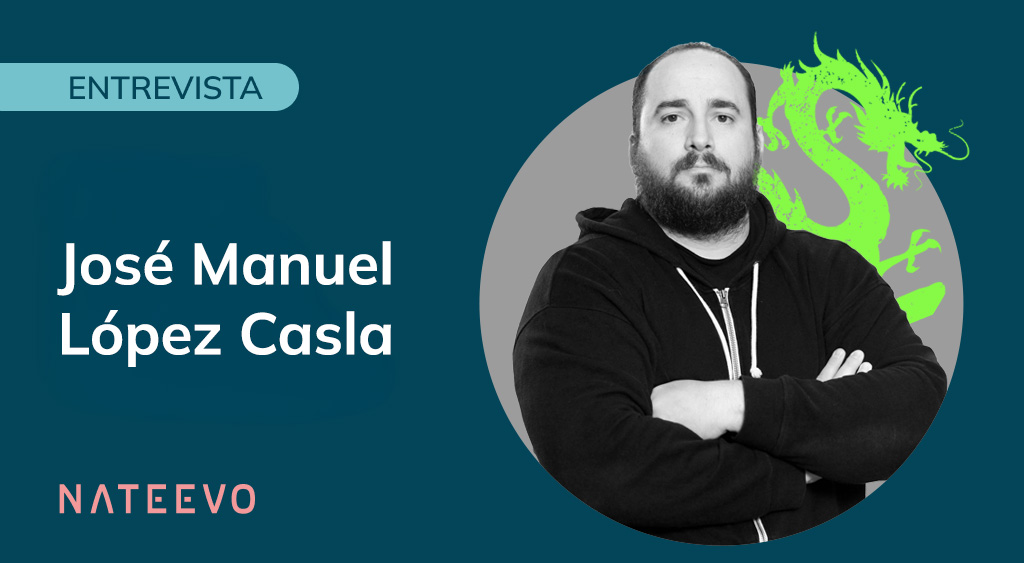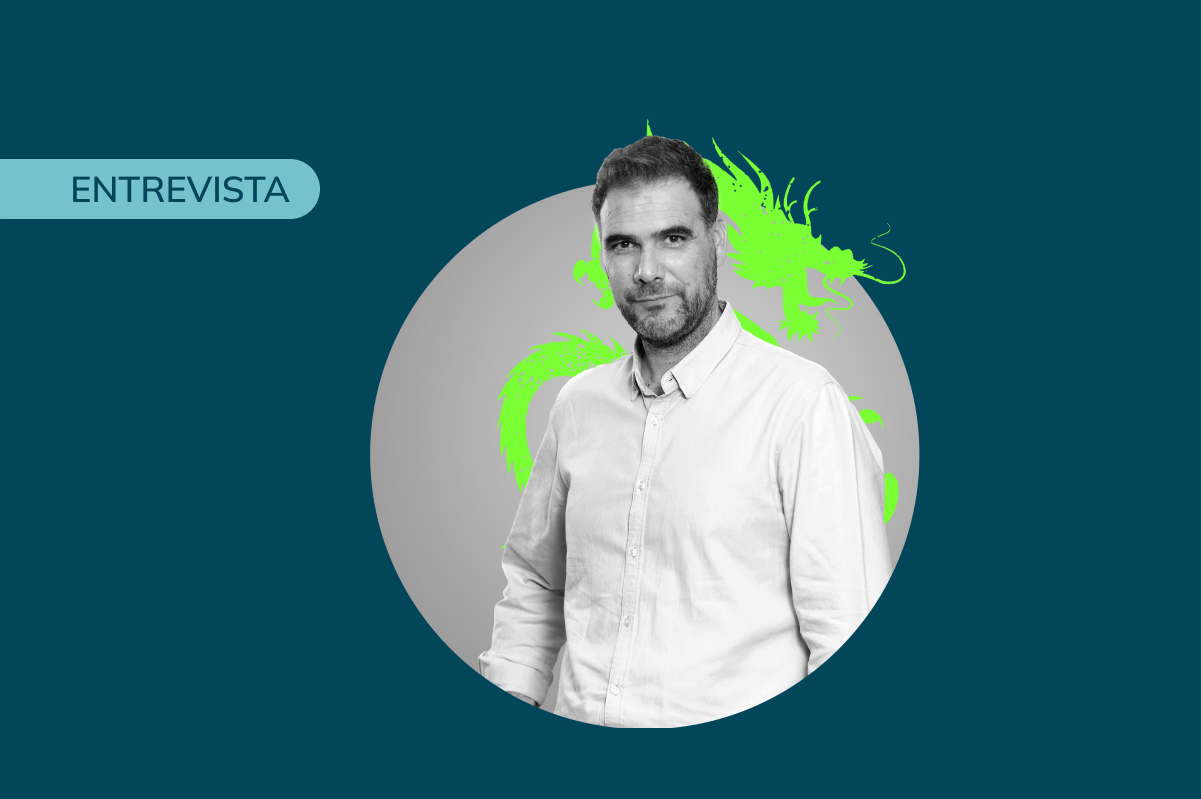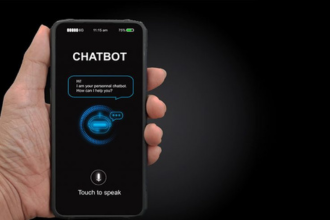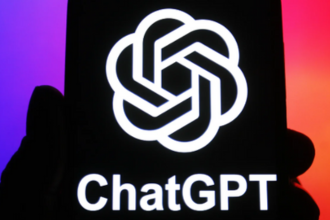"Generative AI is a tool with a lot of power, but it cannot and should not replace the sensitivity and capability of the human component."
We interviewed José Manuel López, Head of Social Media at NATEEVO and Taypei by NATEEVO, who explains how the implementation of generative AI has impacted content and monitoring strategies for social networks..

How has the implementation of generative AI impacted content and monitoring strategies for social networks?
By far the greatest impact has been detected in everything related to content strategies. Social networks require a very high volume of generation and consumption of audiovisual materials. So high that, in many cases, the volume of publication is reduced or quality standards are lowered in order not to incur excessively high costs.
In this sense, the irruption of generative AI has opened the door to the development of creative assets, both video and still images, copies, captions or bodycopies; in a much more economical way, handling high volumes of creation and that, in many cases, not only does not have a negative impact on the quality of the materials generated, but can even raise them in the case of brands with discrete budgets that could not afford constant shootings or professional creative teams.
Are there risks involved? Of course it does. Many years ago, a famous Pirelli advertising campaign used to say "Power without control is useless" and, in this case, we could be perfectly in the same position. Generative AI is a tool with enormous, almost infinite power, but it cannot and should not replace the sensitivity, capacity and brains of the human component.
In the field of monitoring in general, the role of AI has also been and is being relevant. Perhaps at a slower or less immersive pace than in the more "flashy" cases of generating images, videos, audios and so on; and equally more focused on the maxim of making tasks more efficient and, what is probably - in my opinion - the greatest value it can offer: making it easier for us and our customers to make decisions.
How can generative AI help us personalize our social media campaigns on an unprecedented scale, and what impact is it having?
The ease of generating creative assets and multiple variations thereof, together with A/B testing, allows us to test campaigns at levels that would have been difficult to match a relatively short time ago and with very interesting cost containment. Similarly, the analysis of campaign performance in real time, applying a layer of AI, allows us to identify points of improvement that allow us to optimize our campaigns in real time.
These are just a couple of examples of the multitude of options that AI brings to the table when it comes to managing and managing our social media campaigns. I could also go into how the collaboration of AI and Digital Listening can be the best ally when it comes to launching advertising campaigns in digital environments... but we'll talk about that a little later.
How have you adopted generative AI tools in your day-to-day business? What competitive advantages have we gained?
In the field of professional social network management, the implementation of AI in our day-to-day tools has had a double reflection: on the one hand, the vast majority of tools have focused the arrival of AI on supporting the generation of content, either in its application for the development of copies/captions, or for the generation of audiovisual content. To a lesser extent, they have also focused on the analysis of the best publication times based on the volume of the active community in the different time slots.
On the other hand, other tools have been able to understand other applications of AI (without detracting at all from the above) on the basis of the work they have been developing for years. By applying AI as an analysis layer on top of the data handled by these tools, they can offer analyses of great complexity and depth, with an even more surprising reduction in the time traditionally needed to carry them out.
In this sense, the application of this type of solution offers a competitive advantage that is as simple as it is important: the ability to make the time and effort dedicated to certain tasks more efficient, allowing us to focus the energy, time and brains of our team of specialists on making decisions based on the insights "gathered" by the AI. Instead of dedicating days of work to the analysis of huge amounts of information, AI provides us with a base on which to work, allowing the analyst to dedicate his time and expertise directly to actions that translate into decisions that allow us to "move the needle" of our clients.
Why is Digital listening important and does it really work?
We return to a term that, although repeated, is equally valid and important: decision making. This action, decision making, is one of the most complex and important things a company, ourselves as an agency or consultant and, ultimately, each of us as individuals, can face.
Inaction is not a possibility, while decision making based on philias or phobias, instincts, habits and instinct; although it may be the basis for success on many occasions, it also guarantees failure in the vast majority of cases.
On the contrary, digital listening facilitates decision making by allowing us to make decisions based on data. Simply and plainly, for better or worse, in the pure and objective data; extracted from each and every one of the existing conversations in the digital universe around our brand, product, campaign or service. From the detailed analysis of this digital listening, actionable insights emerge that put, in black and white, those hypotheses on which our creative teams and our clients must work and make decisions.
Unfortunately, over the years, digital listening has been worked in the form of huge reports, with huge amounts of information that neither the clients had the material time and knowledge to shred; nor the teams in charge could "pamper" them by giving them the necessary time to find in them "the needle in the haystack" that would allow the client to see the value of a service that, properly worked, can have a great weight for a brand. Unfortunately, this way of working digital listening has meant that, at present and according to the study conducted by Onclusive, less than 5% of large companies include social listening as part of their regular operations.
In contrast, at NATEEVO we approach each digital listening project as a tailor-made suit for each of our clients. To do so, we co-create with them the reports they will receive, adapting them in format, recurrence or dimension to the real needs they have, so that they are useful and operational. In this way, the whole project is adapted to the requirements, with the objective of facilitating the client's work and, going back to the beginning, making decision-making as easy as possible.
How does our team ensure the accuracy and relevance of the data obtained through Digital Listening?
With the non-negotiable application of a maxim that I mentioned above: AI is all very well and very useful, but it should never replace the vision, knowledge, experience, sensitivity and brains of a well-trained, motivated analyst with the necessary time to do his or her job.
At the end of the day, the tool responds to commands and produces results; it is up to us to optimize the entire process to ensure their accuracy and relevance. If this is not the case, it will never be the AI's fault, but ours by action or omission.



